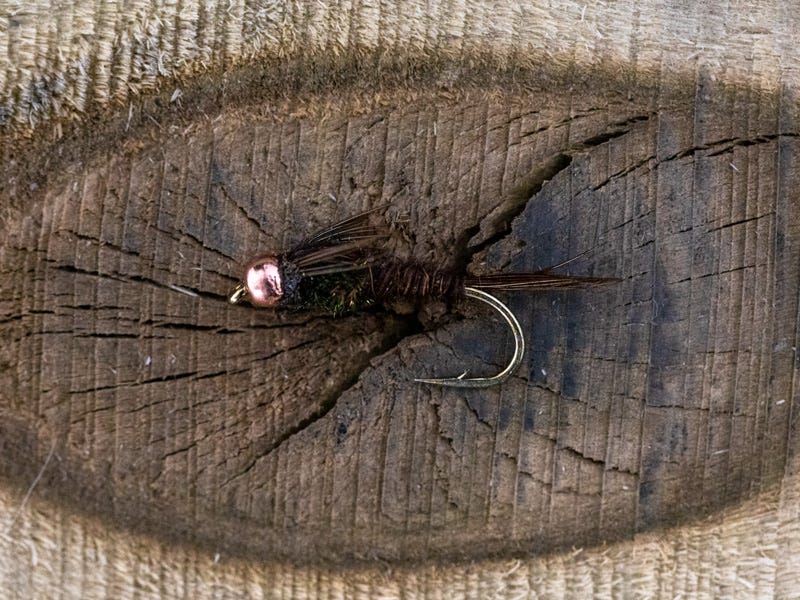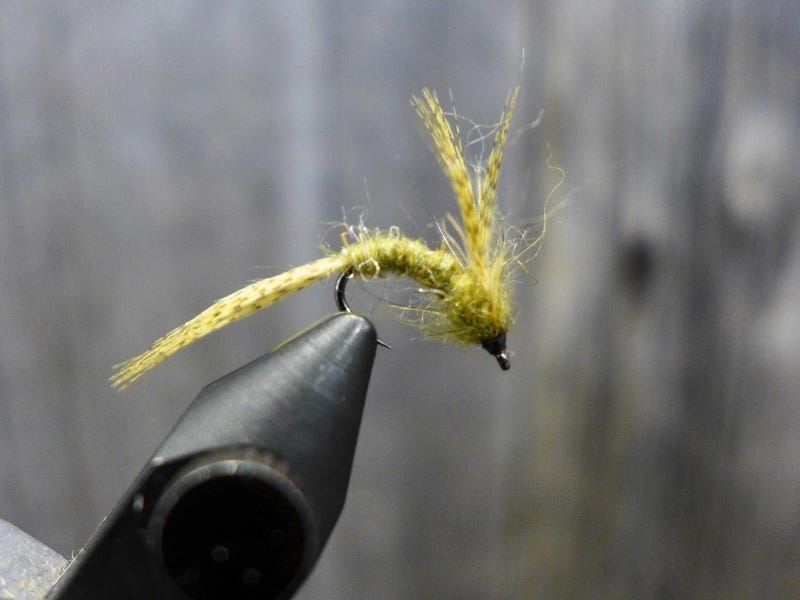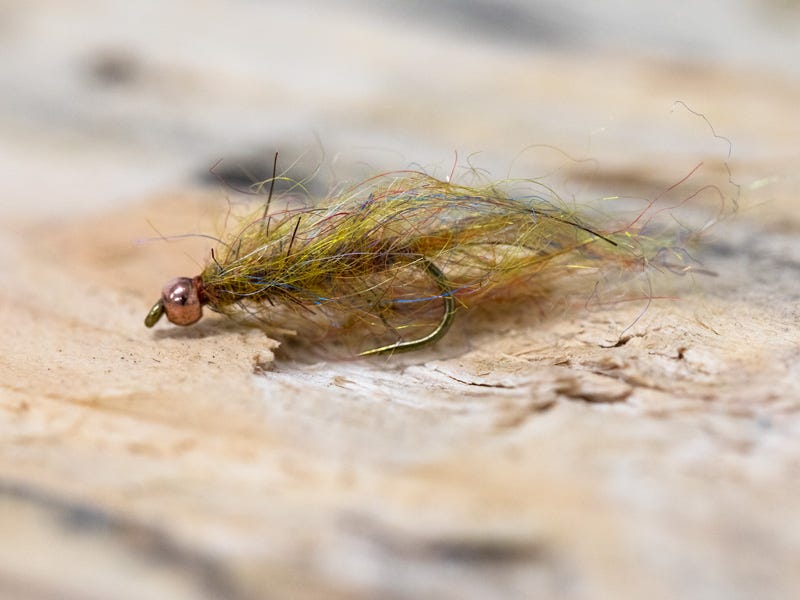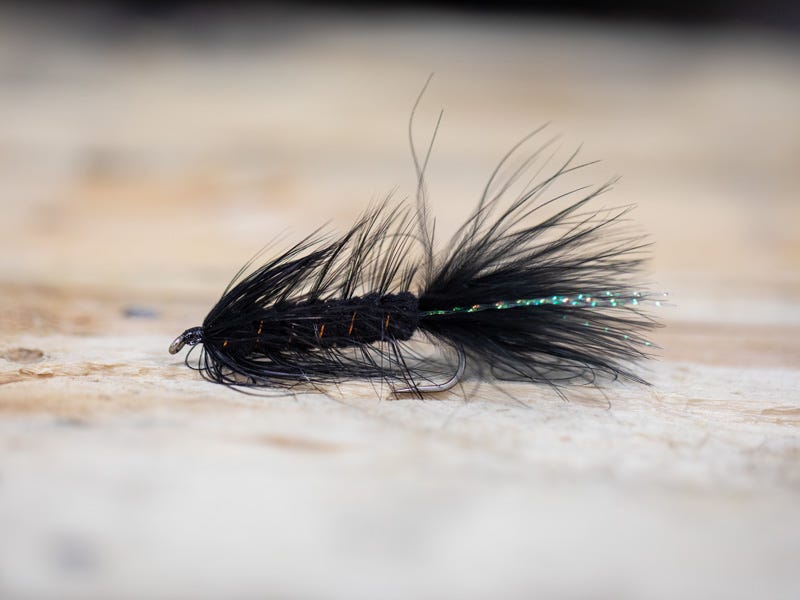If you Could Only Fish One Fly…

I was sitting behind my vise the other day working on restocking my fly boxes for the upcoming year. I have found that tying flies lets me think about several things. I had just finished up tying a run of leech patterns. Looking at the half dozen fly boxes I thought to myself, “that's a lot of flies”. There was quite a collection of different patterns in front of me that would handle most waters I fish. Then I asked myself the question, “if I had to choose just one fly to use all the time for a year, what would it be?”
Have you ever wondered that yourself? Did you ever think about what fly you would choose if you could only fish just one? North 40 Omak Fly Shop Manager, Keith Roe, posed the question to all our fly shop managers and here is what each of them picked.
Taylor Hess - Sandpoint, ID - Sean Weir's Mustard Green #14-18
As a young child, I was exploring the Elk River in West Virginia, where I met Sean Weir. He showed me an emerger fly pattern he called a Mustard Green. My father and I fished a couple of days there using only this pattern and had great success. As I grew into fly fishing, I began tying this pattern in different sizes and colors. The best combination was the original combo that Sean showed me. A long yellow mallard breast tail and brown/olive dubbing body, with another clump of yellow mallard breast as an emerging wing, makes the Mustard Green a super easy and quick tie. This emerger-like pattern can imitate a baetis, green or slate drake, and even emergent caddis. Possibilities are endless when you mix and match different colors on this fly's platform. Dead-drifted and swung is the most effective way to fish this little guy, however, I've had much success keeping it high in the surface film. To this day, I consider it one of my best go-to patterns and it was no doubt one of my best "guide flies".
Need to mix and match fly tying materials? Order online here.

Fred Telleen - Great Falls, MT - Bead Head Semi Seal Leech
In the fly shop, I am often asked; “What is a good fly for trout?” I look out at the over 1,000 different patterns we carry and answer, “Every one of our flies is good in the right place at the right time. But, if you want one fly, you need to decide if you want a dry fly, a nymph, or a streamer.” I won’t tell you my first choices for dry fly or nymph, because if I can only choose one fly, it’s going to be a streamer.
Streamers are go-to patterns for large fish in our Rocky Mountain streams. Explore these.
My one fly streamer choice is currently a bead head simi seal leech. I will swing it, strip it, drift it or suspend it under an indicator. This fly works for trout all season long on the Missouri River. It works great at ice out on the stillwaters and continues to produce throughout the summer and into the fall. It works equally well for panfish, bass, walleye, drum, and carp when I fish warmer waters. I use a #6 Genryuu 90-degree jig hook with a 1/8” tungsten bead. The fly can be tied balanced on an extended pin or with the bead directly on the hook. I utilize a wide variety of color combos and have fun with dubbing blends, tail mixes, and various bead colors. If I am forced to use only one color variant, I choose a black and olive tail, peacock simi seal body and black nickel bead. I like to think this fly can represent a minnow, leech, baby crayfish, damsel nymph, dragonfly nymph, or stonefly nymph. Based on results, I know it works as fish food.

Keith Roe - Omak, WA - Mini BDL
The answer to this came just as quickly as the question. For me, it is a pattern I call the mini BDL.
The mini BDL is a pattern I tied up a few years back. It is best described as a somewhat marriage of a Dali Lama and a sculpzilla, wrapped up in a 2” olive and white streamer. I know with confidence I can fish this fly in rivers and lakes and catch fish. The list of fish I have caught with it is as follows; steelhead, rainbows, westslope cutthroat, Lahontan cutthroat, brown trout tiger trout, brook trout, largemouth bass, smallmouth bass, and various panfish. We all have that one fly that we know will treat us right at any given time and for me, it is definitely the mini BDL.
Tyler Balich - Coeur d’Alene, ID - Bead Head Pheasant Tail, Size 10
A size #10 bead head pheasant tail is my number one fly. I am a dedicated nymph fisherman. Whether it’s a day by myself or I’m guiding on any of our local streams or lakes, my hands will gravitate to this fly when I open my box. You can nymph this fly under an indicator, you can trail it behind a big hopper, you can swing it in a riffle, you can strip it like a tiny streamer in a lake, and the list goes on. Now, it obviously lacks the ability to be a dry fly, but I bet if you see a pod of rainbows on the Clark Fork eating tricos, they would eat this fly as it went by. The reality is, trout spend more time eating bugs under the surface than they do on top. You'd be pretty hard pressed to dry fly fish the majority of our western trout streams during the colder winter months. So, if I were forced to fish through the year with one fly, I surely wouldn't pick a dry. Fish will really eat a nymph any time of the year and that is why I would choose the pheasant tail in a size #10. It can imitate a smaller stonefly, caddis pupae, or a mayfly nymph. Generic, yes, but it catches fish like nobody's business and it has for years. Why mess with success?
Dry Flies and Big Rainbows: A Guide to Montana's lower Clark Fork - Read more.

Dylan McGregor - Lewiston, ID - Black Woolly Bugger, Size 8
The one fly I would have to choose to fish for a year is a size 8 woolly bugger in black. When I first began fishing with a fly, I spent a good amount of time fishing a bugger because that is what I was told to use. In that moment, I never had a clue that this fly could catch a wide variety of species. Bass, carp, trout, steelhead, I don't know of a fish that wouldn't attempt to eat this. Versatility comes in many forms with a fly like this. Drifted underneath an indicator, stripped like a fleeing baitfish, slow striped like a leech, and swung slow for a steelhead, this fly will be attacked. The fly itself takes seven materials to tie, depending if you put a bead on it. This makes it effortless to crank flies up in no time. Yet, you can make your own spin-off of this pattern and add more materials like rubber legs or a dubbing brush as the collar. Ask your local fly legend and he will more than likely tell you that one of his favorite flies to fish is a woolly bugger pattern.

